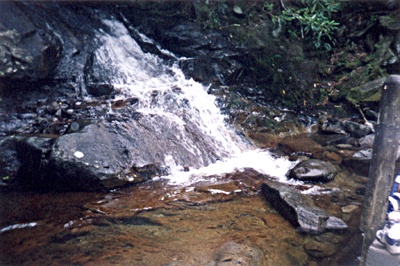All Nonfiction
- Bullying
- Books
- Academic
- Author Interviews
- Celebrity interviews
- College Articles
- College Essays
- Educator of the Year
- Heroes
- Interviews
- Memoir
- Personal Experience
- Sports
- Travel & Culture
All Opinions
- Bullying
- Current Events / Politics
- Discrimination
- Drugs / Alcohol / Smoking
- Entertainment / Celebrities
- Environment
- Love / Relationships
- Movies / Music / TV
- Pop Culture / Trends
- School / College
- Social Issues / Civics
- Spirituality / Religion
- Sports / Hobbies
All Hot Topics
- Bullying
- Community Service
- Environment
- Health
- Letters to the Editor
- Pride & Prejudice
- What Matters
- Back
Summer Guide
- Program Links
- Program Reviews
- Back
College Guide
- College Links
- College Reviews
- College Essays
- College Articles
- Back
What's in YOUR Drinking Water? MAG
The United States has oneof the safest water supplies in the world. National statistics, however, don'ttell you the quality and safety of the water coming out of your tap becausedrinking water quality varies from place to place. Quality depends on thecondition of the source from which water is drawn, and the treatment itreceives.
There is no such thing as naturally pure water. As water flowsin streams, sits in lakes, and filters through layers of soil and rock in theground, it dissolves or absorbs substances it touches. Some contaminants comefrom erosion of rock formations. Others come from substances discharged fromfactories, applied to farmlands, or used by consumers in their homes. Your localwater quality report informs you which contaminants are in your drinking water,the levels at which they were found, and the actual or likely source.
Somegroundwater systems have established wellhead protection programs to preventsubstances from contaminating their wells. Similarly, some surface water systemsprotect the watershed around their reservoir to prevent contamination. Right now,states and water suppliers are working systematically to assess every source ofdrinking water and to identify potential sources of contaminants. This processwill help communities protect their drinking water supplies, and a summary of theresults will be in future water quality reports.
In rural areas, peopleare more likely to drink groundwater pumped from a well. These wells tap intoaquifers (the natural reservoirs under the earth's surface) that may be only afew miles wide, or may span the borders of many states. As with surface water, itis important to remember that activities miles away may affect the quality ofgroundwater.
When a water supplier takes untreated water from areservoir, the water often contains dirt particles and tiny pieces of leaves andother organic materials, as well as trace amounts of certain contaminants. At thetreatment plant, water suppliers often add chemicals called coagulants. The mostcommon drinking water treatment (considered one of the most scientific advances)is disinfection. Most water suppliers use other treatments as needed, accordingto the quality of source. When a system violates a drinking water regulation, itmust notify those affected, and tell them how they should respond. In cases wherethe water presents an immediate health threat, the system must get the news outquickly.
Citizens can both be aware of the challenges of keeping drinkingwater safe and take an active role in protecting water. You can help clean up thewatershed that is the source of the community's water. You might get involved inwellhead protection activities to help prevent the contamination of thegroundwater source, or attend public meetings to make sure your community's needfor safe drinking water is considered in making decisions about land use. We allcan do our part to conserve water.

Similar Articles
JOIN THE DISCUSSION
This article has 2 comments.

0 articles 0 photos 12292 comments